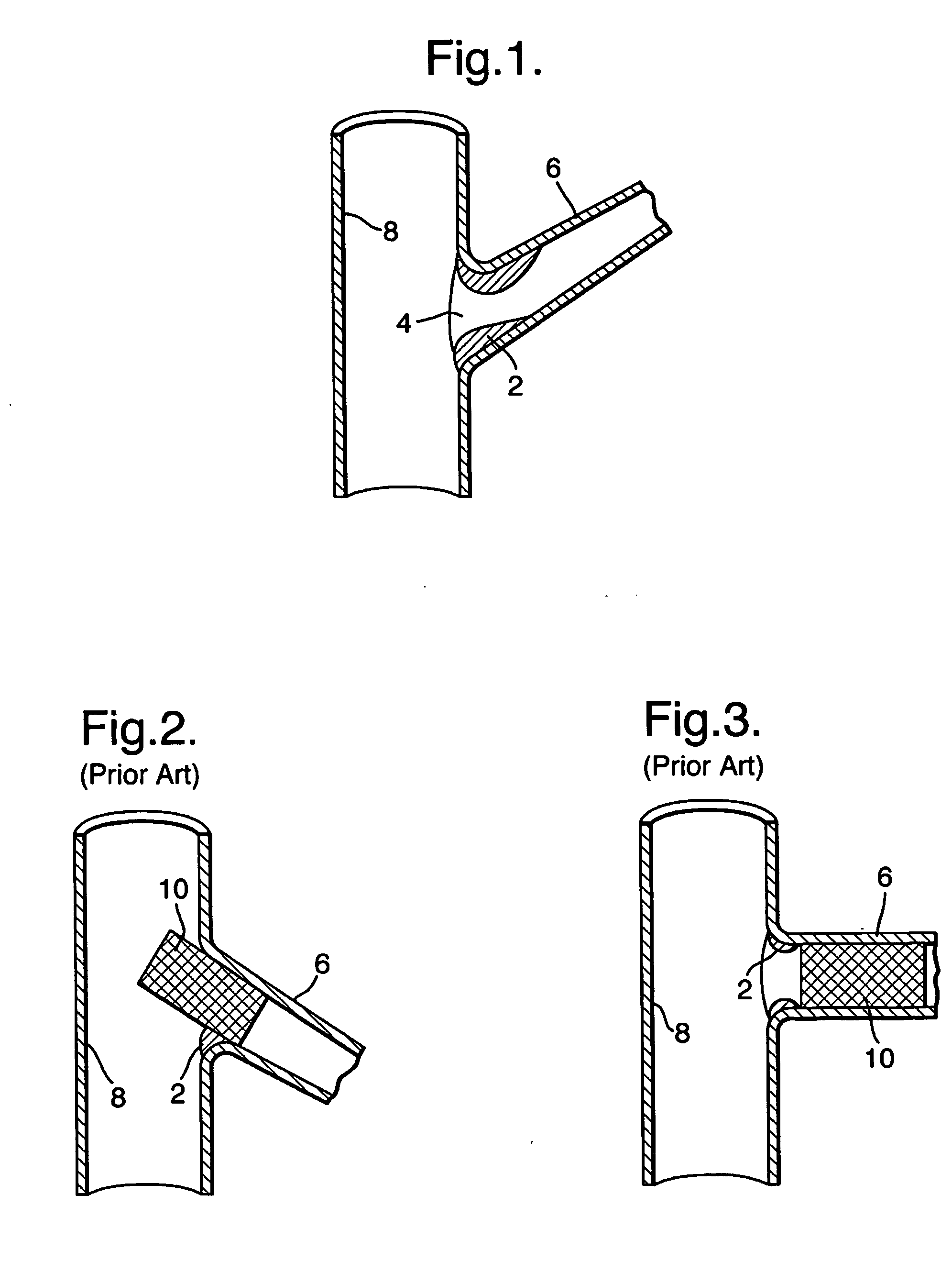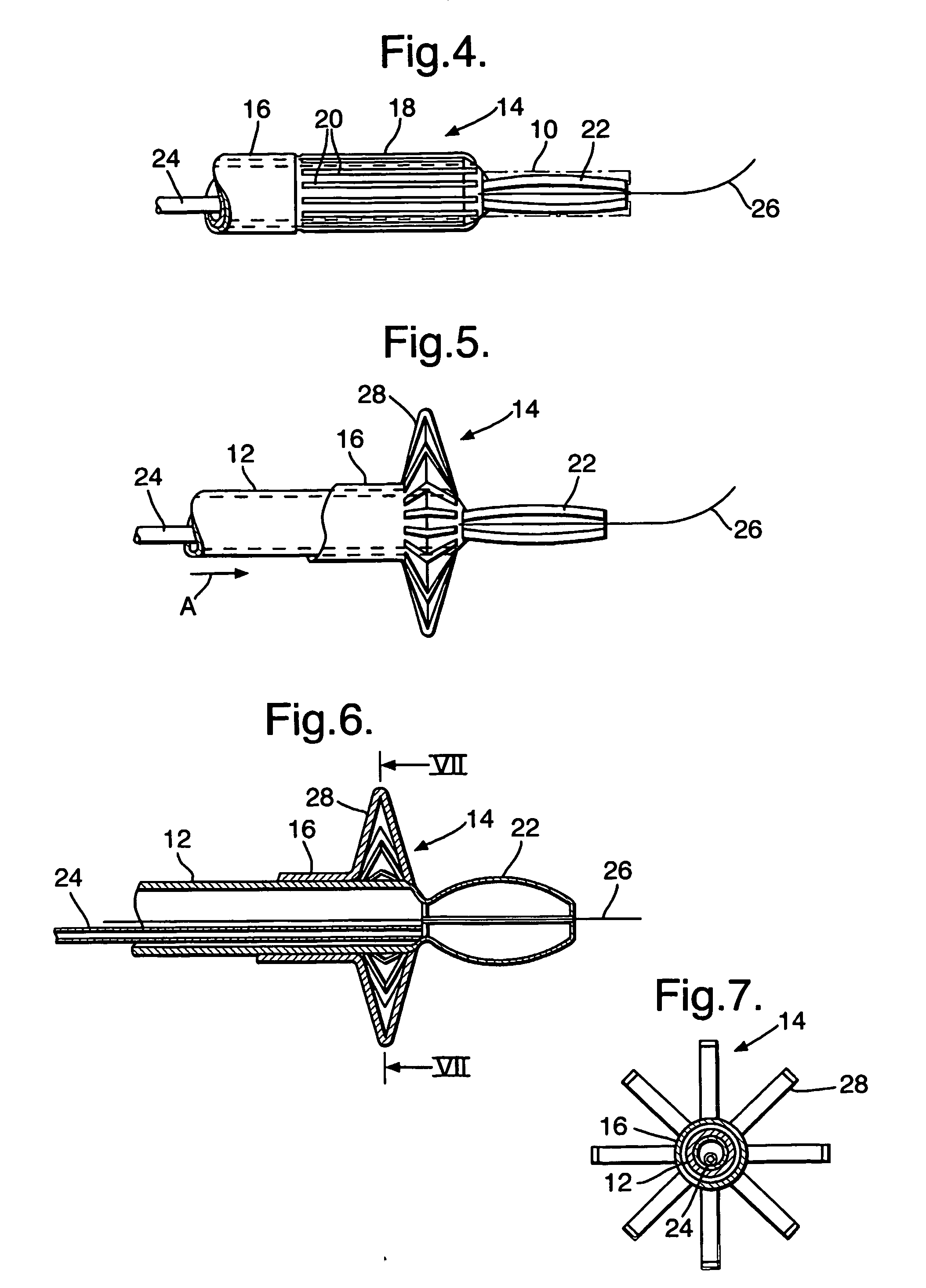Stent positioning system
a positioning system and stent technology, applied in the field of stent positioning system, can solve the problems of high incidence of re-stenosis, low success rate of aorto-ostial lesions by conventional balloon angioplasty, and compromising the aortal lumen, so as to increase the danger of stent thrombosis and re-stenosis
- Summary
- Abstract
- Description
- Claims
- Application Information
AI Technical Summary
Benefits of technology
Problems solved by technology
Method used
Image
Examples
Embodiment Construction
[0021] Referring now to the drawings, there is illustrated in FIG. 1 a typical ostial lesion, defined as a lesion arising within 3 mm of the origin of the blood vessel. More specifically, FIG. 1 illustrates an aorto-ostial atherosclerotic lesion, that produces a significant stenosis 2 at the ostium 4 of a coronary artery 6, where the artery branches off the aorta 8.
[0022]FIGS. 2 and 3 illustrate faulty prior art stent-to-vessel apposition. In FIG. 2, stent 10 is implanted in too proximal a location and is seen to project into aorta 8, where it is subject to trauma from the guiding catheter and is also liable to compromise the lumen of the aorta, increasing the danger of stent thrombosis and re-stenosis. In FIG. 3, the stent is placed in too distal a location, missing the ostium 2 and the tightest portion of the stenosis.
[0023] The above-mentioned mishaps are avoided by the use of the stent positioning system of the present invention, a preferred embodiment of which is shown in FIG...
PUM
 Login to View More
Login to View More Abstract
Description
Claims
Application Information
 Login to View More
Login to View More - R&D
- Intellectual Property
- Life Sciences
- Materials
- Tech Scout
- Unparalleled Data Quality
- Higher Quality Content
- 60% Fewer Hallucinations
Browse by: Latest US Patents, China's latest patents, Technical Efficacy Thesaurus, Application Domain, Technology Topic, Popular Technical Reports.
© 2025 PatSnap. All rights reserved.Legal|Privacy policy|Modern Slavery Act Transparency Statement|Sitemap|About US| Contact US: help@patsnap.com



